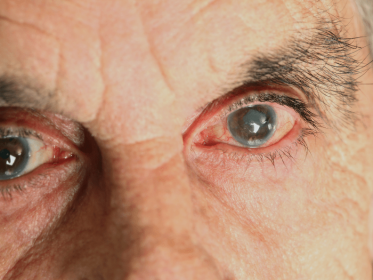- +1 888.407.0616
- info@mdchoicehospicecare.com
- Mon - Fri 9 AM - 5 PM

Glaucoma is a chronic eye disease characterized by a rise in intraocular pressure, the development of optical neuropathy, and loss of vision. Glaucoma causes narrowing of the visual fields, discomfort, and heaviness in the eyes, blurred vision, worsening of twilight vision, and, in extreme instances, blindness. Perimetry, tonometry, and tomography, as well as gonioscopy, optical coherence tomography, and laser… Glaucoma is treated with anti-glaucoma drops, laser surgery, or anti-glaucomatous surgeries.
In fact, glaucoma is one of the most common disorders that cause visual loss across the world. According to WHO estimates, the condition affects roughly 3% of the global population. Glaucoma is most common in persons over the age of 40, however, there are also types of the condition known as juvenile and congenital glaucoma in ophthalmology.
In reality, each type of glaucoma may have its own set of symptoms and causes. Local variables such as alterations in the eye’s arteries, trophic abnormalities of its drainage system, and increased pressure in the visual organs, for example, all contribute to the development of primary open-angle glaucoma. Neuroendocrine and hemodynamic problems, as well as burdened heredity, are common reasons that can have a substantial influence on the development of the disease. Those with close relatives who have had this disease should monitor intraocular pressure and do computer perimeter and examinations on a regular basis.

The outflow of fluid from the eye is interrupted as a result of the alterations, and as a result, the pressure on the tissues of the optic nerve gradually rises, contributing to disc degeneration and nerve fiber atrophy.
Cataracts, severe vascular sclerosis, and chronic vegetative-vascular dystonia are all common complications.
The production of adhesions, bombing (bulging of the iris), and closure of the iridocorneal angle are all symptoms of angle-closure glaucoma. Inflammation of the vascular membrane, hyperopia, retinal vein thrombosis, and hemophthalmos are all associated with secondary glaucoma. Cervical osteochondrosis, hypotension, old age, and atherosclerosis of the cerebral arteries are other unfavorable risks.
Pupil dilatation, emotional excitation, hypothermia, excessive beverage or alcohol consumption, and extended presence with a lowered head are all symptoms of an acute glaucoma episode.

Glaucoma is usually bilateral. The patient usually experiences pressure in the eyes, impaired vision, the creation of iridescent rings while staring at a light source, and lightning flashes in the early stages of the condition. The pressure inside the eye gradually rises, sharpness drops, and the field of vision narrows.
The tissues of the optic nerve die off over time, and blindness occurs. In this circumstance, eyesight restoration is no longer feasible.
However, the progression of glaucoma does not cease after visual loss. Severe headaches (migraine-like) and eye discomfort are possible side effects. In some circumstances, removing the eye is essential to eradicate them.
The disintegration of the pigmented border, edge excavation, halo (the appearance of a yellow or white crown around the visual disc), and the formation of a narrow blind spot are all symptoms of the disease.
Bradycardia, nausea, vomiting, pain in the eye, giving off along the trigeminal nerve, in the area of the temples and forehead, visual acuity drops, the iris becomes hyperemic, and the cornea becomes clouded are all symptoms of an acute episode of glaucoma. After an assault, the pupil may be displaced and deformed, resulting in rough adhesions and segmental atrophy.
With glaucoma, complications such as intraocular hemorrhages, lens subluxation, retinal detachment, blindness, pain not relieved by strong analgesics, etc. may develop.
Complications of glaucoma include intraocular hemorrhages, lens subluxation, retinal detachment, blindness, and discomfort that is not eased by powerful analgesics.
Because obvious symptoms normally develop only in the latter stages of the disease, you should consult a professional as soon as you suspect you have a vision problem. It is critical to do preventative exams if there are predisposing factors, such as other eye illnesses. If your doctor has given anti-glaucoma drops, make sure you keep all of your appointments and don’t skip a single one. Later stages may lead to surgery to prevent further complications.
You can never return the vision lost because of glaucoma. So whenever you feel like something is wrong don’t hesitate to see a doctor.